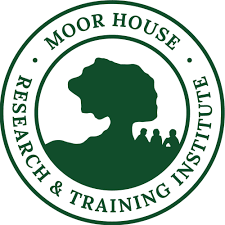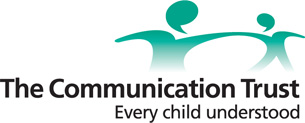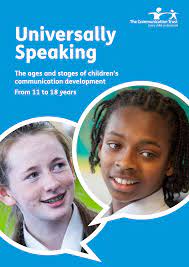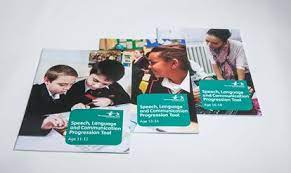How to make sure children and young people at risk of speech, language and communication needs are identified early and effectively
You haven't selected an area yet so you will only see core resources from across the UK. Select your local area from the home page
The resources here will help you reach the outcome: "I know how to make sure teenagers at risk of speech, language and communication needs are identified early and effectively."
Click the star icon ![]() next to the items you want to save and view them in your pathway
next to the items you want to save and view them in your pathway
What are the signs of DLD?
Leaflet outlining 10 key signs that indicate a child may have DLD.
Cost: Free


A Guide to Identification - Worcestershire SLCN Pathway
Identifying SLCN can be problematic for many reasons. Children and young people may have other difficulties as well as SLCN, they may have a wide and complex range of needs and therefore there can be co-occurrence with other diagnoses. SLCN is often considered to be a 'hidden disability'. Some aspects of SLCN are more visible than others, particularly those associated with speech sounds, others are less so. We know that early identification leads to better outcomes for children and young people, so the sooner a need is identified the better.
The Worcestershire SLCN Pathway guide and tools help practitioners to support identification of SLCN.
Download Worcestershire SLCN Pathway's Guide to Identification
Cost: Free



Identification Tools for School Age Children - Worcestershire SLCN Pathway
The Worcestershire SLCN Pathway guide and tools help practitioners to support identification of SLCN.
Tools for school age include: developmental norms, the child's voice, early warning signs for school age and tools for identification of need in both primary age and secondary age.
Download Worcestershire's SLCN Pathway Guide to Identification
Download Parent discussion template
Download Early Warning Signs for School Age
Download Identification of Need for Primary Age
Download Identification of Need for Secondary Age
Cost: Free


TCT Building a Profile
This document has been designed to guide you in making a referral to speech and language services. Being aware of the different types of speech, language and communication needs (SLCN) will make it easier for you to describe the child / young person's difficulties accurately, enabling them to access the right support as quickly as possible.
Cost: Free



Worcestershire Identifying SLCN
Identifying SLCN can be problematic for many reasons: children may have other difficulties as well as SLCN, they may have a wide and complex range of needs and therefore there can be co-occurrence with other labels and diagnoses. SLCN is often considered to be a 'hidden disability'. Some aspects of SLCN are more visible than others, particularly those associated with speech and sounds. Others are less so, for example the child who is experiencing difficulties understanding or using language may appear to be inattentive, passive or even rude. There are children who become very skilled at hiding their difficulties, e.g. by watching other people so they know what to do or by pretending they know when they don't. SLCN may be missed altogether or masked by these other characteristics. Here you will find information to support you to identify SLCN.
Cost: Free


Enquiry Line
The Speech and Language UK Enquiry Service gives parents a chance to discuss questions or concerns about their child’s speech, language and communication development with one of Speech and Language UK’s speech and language therapists. The therapists can give helpful information about children’s talking and communication development as well as tips on improving these skills. They can also offer advice on ages and stages and what can be done to help the child get the right support.
Cost: Free




Afasic
Afasic supports parents and carers with young children who have difficulties with listening, talking and understanding others. Here is information for you use and to share with families of the children you support. It includes a wide range of information about talking, listening and understanding and what might cause these difficulties. If families are worried that their teenager is not talking or not saying as much as other children of their age, they can contact Afasic by telephone or email to speak to someone who can help.
Cost: Free




Afasic Parent Helpline
If a parent is worried about their child / young person's speech, language and communication, share this Afasic helpline information so that they can speak to someone who can help by telephone or email.
Cost: Free




Speech and Language UK Ages and Stages
This is a guide to the typical stages of speech and language development in children. Children develop language at different rates. However, understanding what is typical can help you identify speech and language problems early. This page also provides information about how to support children's development.
Cost: Free




Universally Speaking 11-18
Universally Speaking is a series of booklets for anyone who works with children and young people. The booklets show where children and young people should be with their communication skills at any given age. You can use the booklets to find out whether the children and young people you work with are on the right track, what helps them learn to talk and listen and what to do if you have concerns about any of their communication abilities.
Cost: Free




What's typical talk at secondary?
This poster is an easy reference for teachers to understand young people's speech and language development from 11-18 years and supports them in identifying children who may have speech, language and communication needs.
Cost: Free


TCT Progression Tools Secondary
The Progression Tools are based on typical speech and language development and provide a way of tracking progression of these skills over time or following interventions. The Tools are not a diagnostic tool, however they do provide information to help decide whether children and young people would benefit from a targeted intervention or specialist assessment and support.
Cost: £


Secondary Language Link
Secondary Language Link is a comprehensive SLCN support package. This assessment, targeted interventions and teacher training package enables secondary schools to identify and support the language and communication needs of Key Stage 3 students aged 11-14
Cost: £








